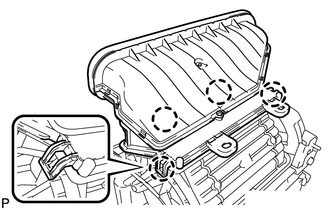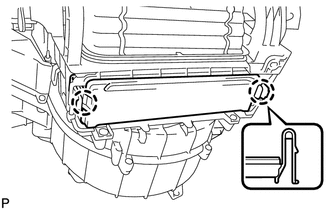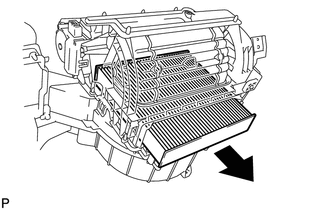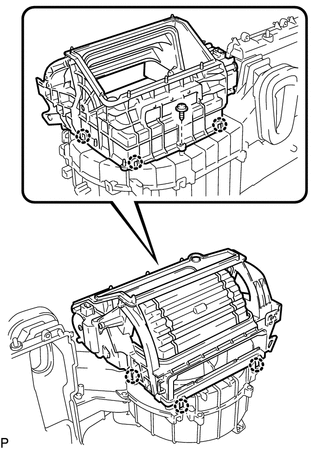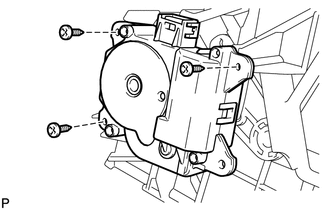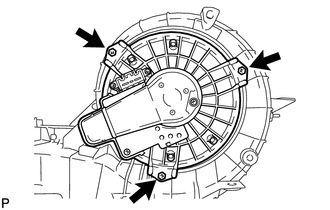Toyota Venza: Disassembly
DISASSEMBLY
PROCEDURE
1. REMOVE NO. 1 AIR DUCT SUB-ASSEMBLY
|
(a) Disengage the 4 claws and remove the No. 1 air duct sub-assembly. |
|
2. REMOVE AIR FILTER COVER PLATE
|
(a) Disengage the 2 claws and remove the air filter cover plate. |
|
3. REMOVE CLEAN AIR FILTER
|
(a) Remove the clean air filter as shown in the illustration. |
|
4. REMOVE AIR CONDITIONING AMPLIFIER ASSEMBLY
|
(a) Remove the 2 screws and air conditioning amplifier assembly. |
|
5. REMOVE AIR INLET SERVO MOTOR SUB-ASSEMBLY
|
(a) Remove the screw. |
|
(b) Disengage the 6 claws and remove the blower case.
|
(c) Remove the 3 screws and air inlet servo motor sub-assembly. |
|
6. REMOVE FRONT BLOWER MOTOR SUB-ASSEMBLY
|
(a) Remove the 3 screws and front blower motor sub-assembly. |
|
 Removal
Removal
REMOVAL
PROCEDURE
1. REMOVE AIR CONDITIONING UNIT ASSEMBLY
(See page )
2. REMOVE NO. 1 FINISH PANEL MOUNTING BRACKET
3. REMOVE NO. 2 FINISH PANEL MOUNTING BRACKET
4. REMOVE NO. 3 AIR DUCT ...
 Reassembly
Reassembly
REASSEMBLY
PROCEDURE
1. INSTALL FRONT BLOWER MOTOR SUB-ASSEMBLY
(a) Install the front blower motor sub-assembly with the 3 screws.
2. INST ...
Other materials about Toyota Venza:
Steering Pad Switch Circuit
DESCRIPTION
This circuit sends an operation signal from the steering pad switch assembly
to the navigation receiver assembly.
If there is an open in the circuit, the audio system cannot be operated using
the steering pad switch assembly.
If there is a s ...
Removal
REMOVAL
CAUTION / NOTICE / HINT
HINT:
Use the same procedure for the LH side and RH side.
The following procedure is for the LH side.
If the sensor rotor needs to be replaced, replace it together with the
front drive shaft assembly.
...
Components
COMPONENTS
ILLUSTRATION
ILLUSTRATION
ILLUSTRATION
ILLUSTRATION
ILLUSTRATION
ILLUSTRATION
ILLUSTRATION
ILLUSTRATION
ILLUSTRATION
ILLUSTRATION
ILLUSTRATION
...
0.1583

